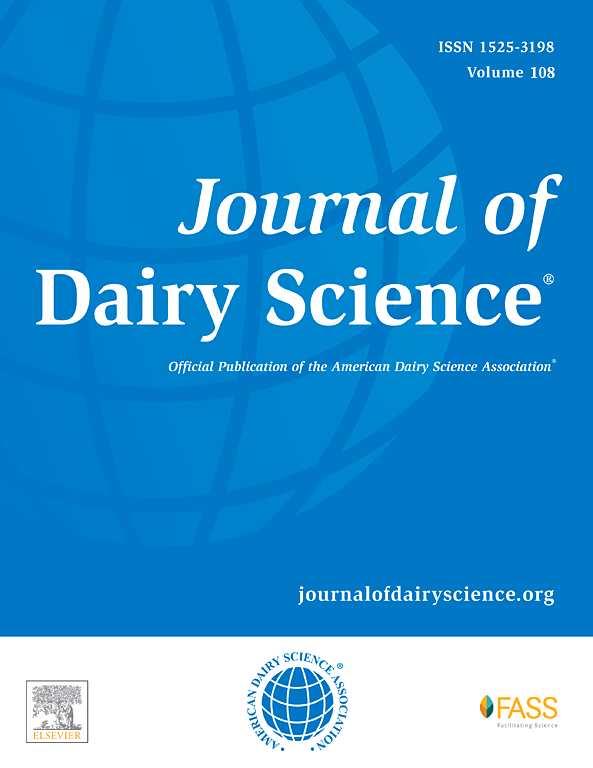The study investigated the effects of dietary protein level and the inclusion of hydroponic barley sprouts (HB) on lactation performance, blood biochemistry and N use efficiency in mid-lactation dairy cows. Treatments were arranged in a 2 × 2 factorial design with 2 CP levels (16.8% and 15.5% of DM), with HB (4.8% of DM, replacing 4.3% of alfalfa hay and 0.5% of distillers dried grains with solubles [DDGS]) or without HB. Forty-eight multiparous Holstein dairy cows (146 ± 15 DIM, 40 ± 5 kg/d of milk) were randomly allocated to 1 of 4 diets: high-protein diet (16.8% CP, HP), HP diet with HB (HP+HB), low-protein diet (15.5% CP, LP), or LP diet with HB (LP+HB). An interaction between CP × HB on DMI was detected, with DMI being unaffected by HB inclusion in cows fed the high-protein diets, but was lower in cows fed HB when the low-protein diet was fed. A CP × HB interaction was also observed on milk and milk protein yield, which was higher in cows fed HB with HP, but not LP. Inclusion of HB also tended to reduce milk fat content, and feeding HP resulted in a higher milk protein and MUN content, but lower milk lactose content. Feed efficiency was increased by feeding HP or HB diets, whereas N use efficiency was higher for cows fed LP or HB diets. There was an interaction on the apparent total-tract digestibility of DM and CP, which was higher when HB was fed along with HP, but reduced when fed with LP, whereas the digestibility of ADF was increased by feeding low-protein diets. In conclusion, feeding a low-protein diet had no adverse effect on cow performance, while feeding HB improved milk and milk component yield, and N efficiency when fed with a high-CP diet, but compromised cow performance with a low-CP diet.
DOI:
https://doi.org/10.3168/jds.2023-24178
Skor altmetrik:
Jumlah Kutipan Dimensi:

Tahun publikasi
2024
Penulis
Wu, Z.H.; Du, C.; Hou, D.J.; Zhao, L.S.; Ma, L.; Sinclair, L.A.; Bu, D.P.
Bahasa
English
Kata kunci
dairy industry, cows, dietary protein, feed intake, hydroponic, nitrogen utilization
Geografis
China


















